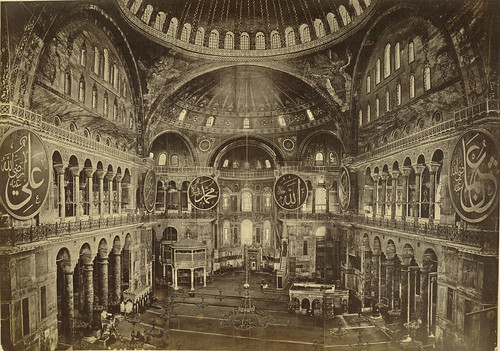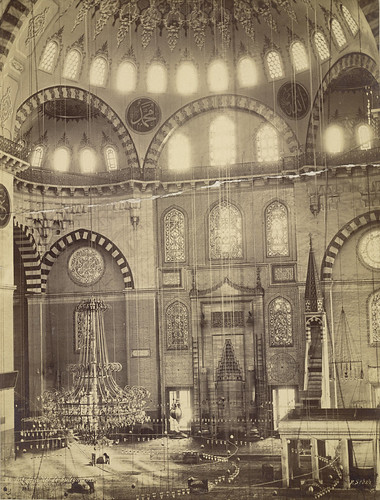by Pamela Toler
Commissioning a mosque was both an act of piety and a political statement in the Ottoman empire. Surrounded by building complexes that provided social services ranging from a public fountain to a caravanserai, mosques anchored new neighborhoods in old cities. Who commissioned what was carefully linked to social status. Small officials commissioned small mosques. Grand viziers commissioned grand mosques. And when the greatest Ottoman emperor and the greatest Ottoman architect teamed up to build a new imperial mosque in Istanbul, you got something, well, magnificent.
In 1550, Suleyman the Magnificent had ruled the Ottoman empire for thirty years. He had defended Islam against Christians to the west and Shiite heretics to the east. He had expanded his empire’s boundaries from Budapest to Basra. He had built mosques everywhere his armies went. Now he was ready to build the big one in Istanbul itself.
Sinan was the acknowledged master of Ottoman architecture. Originally an officer and engineer in the Ottoman army, Sinan had caught the emperor’s eye with his talent for building temporary bridges for an army on the march. Under Suleyman’s patronage, he moved from bridges to buildings when he became Chief Architect of the Ottoman court in 1537. By 1550, Sinan was famous for his treatment of foundations and domes.
Together, Suleyman and Sinan built a mosque that was an Ottoman answer to Hagia Sophia. When the Ottomans conquered Istanbul in 1453, Mehmet the Conqueror physically appropriated the Byzantine cathedral for use as the imperial mosque. Sinan’s act of appropriation was more subtle.
Built 1,000 years before the Suleymaniye Mosque, Hagia Sophia is an architectural masterpiece. Its massive elliptical dome seems to float above the nave of the church because it rests on a ring of windows that separate it from the structure. Glittering mosaics dissolve the interior space of the building into shadowy mystery.
Sinan used the same structural scheme as the Hagia Sophia to create a totally different effect in the Suleymaniye Mosque. In a sixteenth century version of form follows function, the structure that holds the dome in place is clearly visible. Instead of disguising the tension between the curves of the dome and the straight horizontal lines of the building below, Sinan accentuates it. The result? The dome of heaven soars above the human world of prayer.
Photographs courtesy of the Library of Congress and Cornell University.
Pamela Toler is a freelance writer with a PhD in history, a large bump of curiosity, and a red-hot library card. She is the author of The Everything Guide to Socialism and Mankind: The Story of All of Us, a companion book to the History Channel Series of the same name. She blogs at History in the Margins

![[Mosque of St. Sophia, Constantinople, Turkey] (LOC)](https://farm3.staticflickr.com/2543/4210470133_b7f4eb0036.jpg)

